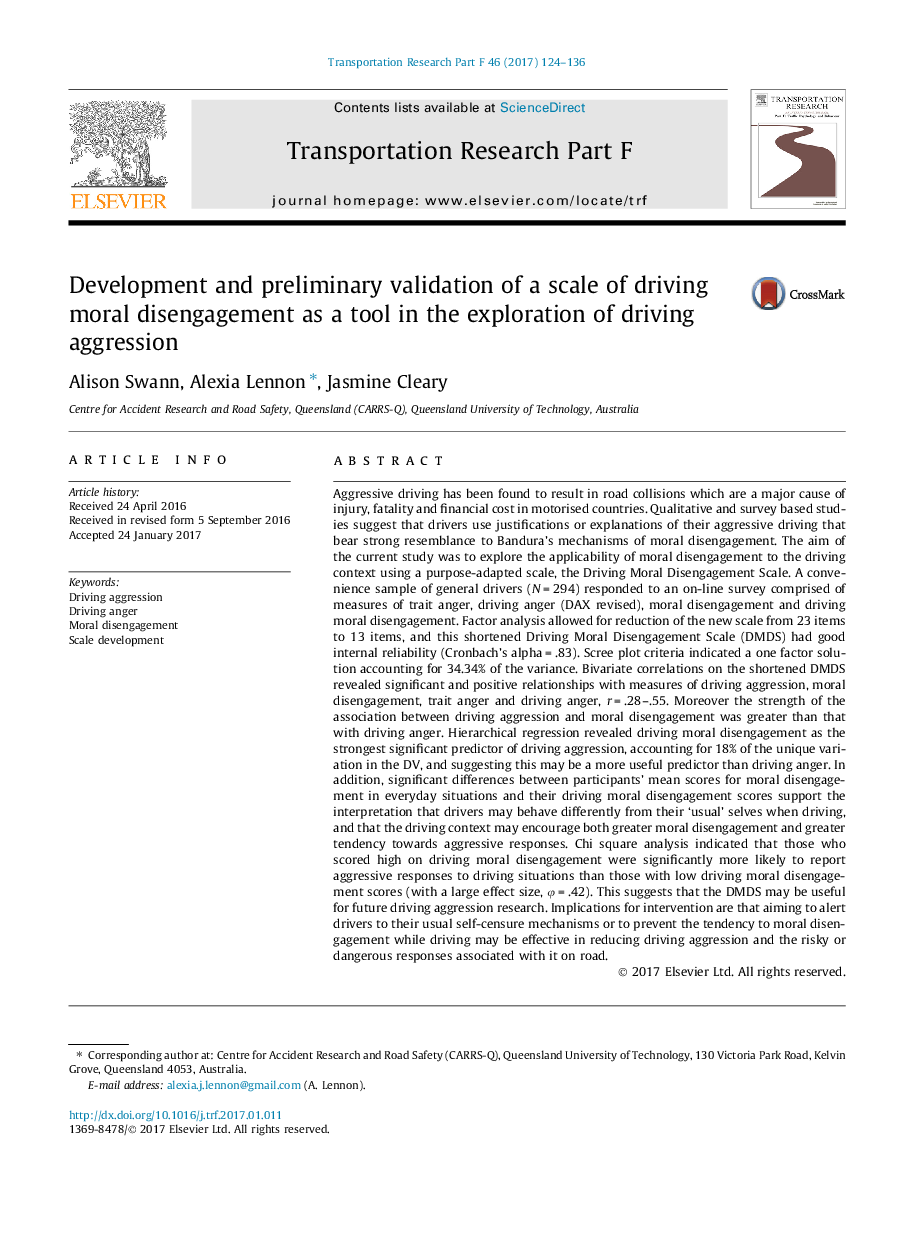| کد مقاله | کد نشریه | سال انتشار | مقاله انگلیسی | نسخه تمام متن |
|---|---|---|---|---|
| 5037434 | 1370222 | 2017 | 13 صفحه PDF | دانلود رایگان |
- New driving aggression research instrument proposed: the Driving Moral Disengagement Scale.
- Factor analysis of Driving Moral Disengagement Scale showed good internal reliability.
- Moral disengagement while driving strongest predictor self-reported driving aggression.
- Driving moral disengagement accounted for 18% unique variation in driving aggression.
- Results support view that drivers are more aggressive on road than in everyday situation.
Aggressive driving has been found to result in road collisions which are a major cause of injury, fatality and financial cost in motorised countries. Qualitative and survey based studies suggest that drivers use justifications or explanations of their aggressive driving that bear strong resemblance to Bandura's mechanisms of moral disengagement. The aim of the current study was to explore the applicability of moral disengagement to the driving context using a purpose-adapted scale, the Driving Moral Disengagement Scale. A convenience sample of general drivers (N = 294) responded to an on-line survey comprised of measures of trait anger, driving anger (DAX revised), moral disengagement and driving moral disengagement. Factor analysis allowed for reduction of the new scale from 23 items to 13 items, and this shortened Driving Moral Disengagement Scale (DMDS) had good internal reliability (Cronbach's alpha = .83). Scree plot criteria indicated a one factor solution accounting for 34.34% of the variance. Bivariate correlations on the shortened DMDS revealed significant and positive relationships with measures of driving aggression, moral disengagement, trait anger and driving anger, r = .28-.55. Moreover the strength of the association between driving aggression and moral disengagement was greater than that with driving anger. Hierarchical regression revealed driving moral disengagement as the strongest significant predictor of driving aggression, accounting for 18% of the unique variation in the DV, and suggesting this may be a more useful predictor than driving anger. In addition, significant differences between participants' mean scores for moral disengagement in everyday situations and their driving moral disengagement scores support the interpretation that drivers may behave differently from their 'usual' selves when driving, and that the driving context may encourage both greater moral disengagement and greater tendency towards aggressive responses. Chi square analysis indicated that those who scored high on driving moral disengagement were significantly more likely to report aggressive responses to driving situations than those with low driving moral disengagement scores (with a large effect size, Ï = .42). This suggests that the DMDS may be useful for future driving aggression research. Implications for intervention are that aiming to alert drivers to their usual self-censure mechanisms or to prevent the tendency to moral disengagement while driving may be effective in reducing driving aggression and the risky or dangerous responses associated with it on road.
Journal: Transportation Research Part F: Traffic Psychology and Behaviour - Volume 46, Part A, April 2017, Pages 124-136
